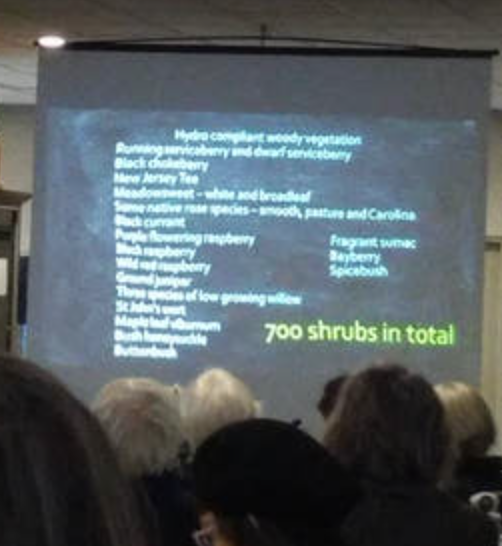Nurturing Pollinators from the Soil to the Tree-tops: Pollination Guelph Symposium 2018
Diversity is Stability.” Moritz Sanio, Trees for Guelph.
Making lemonade or What happened after the buckthorn was Gone: The Silvercreek Park Hydro Corridor Project was a joint presentation by Moritz Sanio (Trees for Guelph) and Lisa Mactaggart, OALA Arium Design Group.
So what happened when Hydro One cut the forest along the 4 acres, Silvercreek Park hydro corridor? The neighbours were upset. What they didn’t know was the this “forest” was composed of mostly invasive buckthorn. Once they were educated on how undesirable buckthorn is, they recognized an opportunity to create biodiversity by planting native plant habitat! In the process, the neighbours strengthened their community cohesion and engagement, while gaining a meadow.
We learned from Moritz that planting in the spring is a European model that is not useful for introducing a meadow. We need to follow the model that nature provides. Inputting seed into the landscape, 6 to 7 inches apart is ideal. Put seeds down in the winter or late fall if you want the seeds to germinate in the winter, so that they can stratify. That is, stratification breaks seeds’ dormancy and they come upon their own accord, “so be patient,” Moritz advised. Snow is handy because you can actually see the seed! Be careful not to step on the tiny seedlings. Planting day for the project was May, 2016 and you can read all about it, as well as the plants that were used, in the Milkweed Journal… (continue reading).

